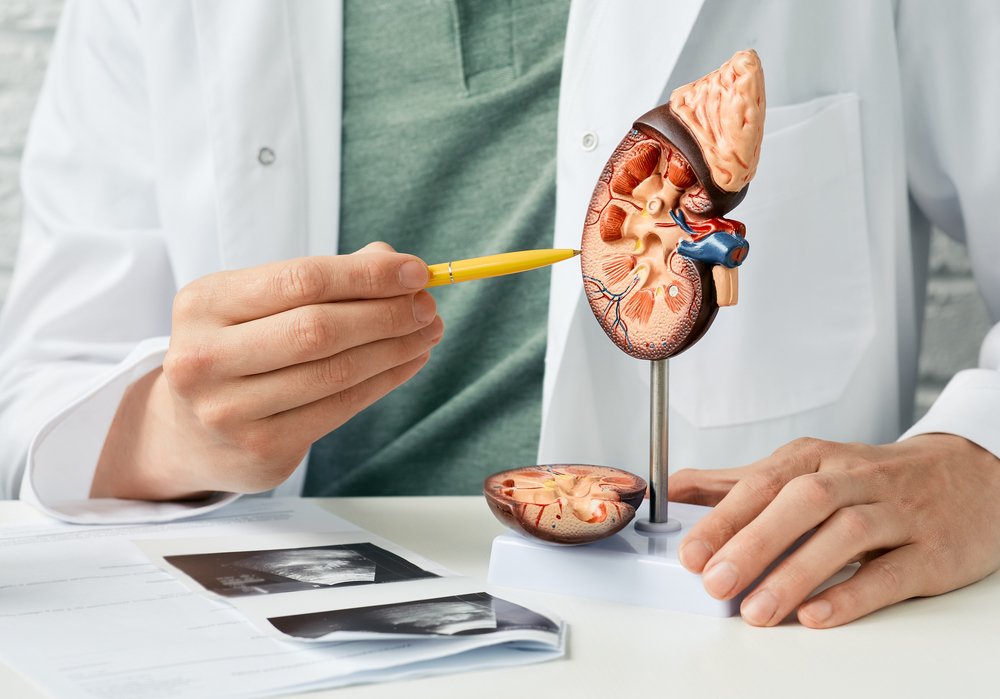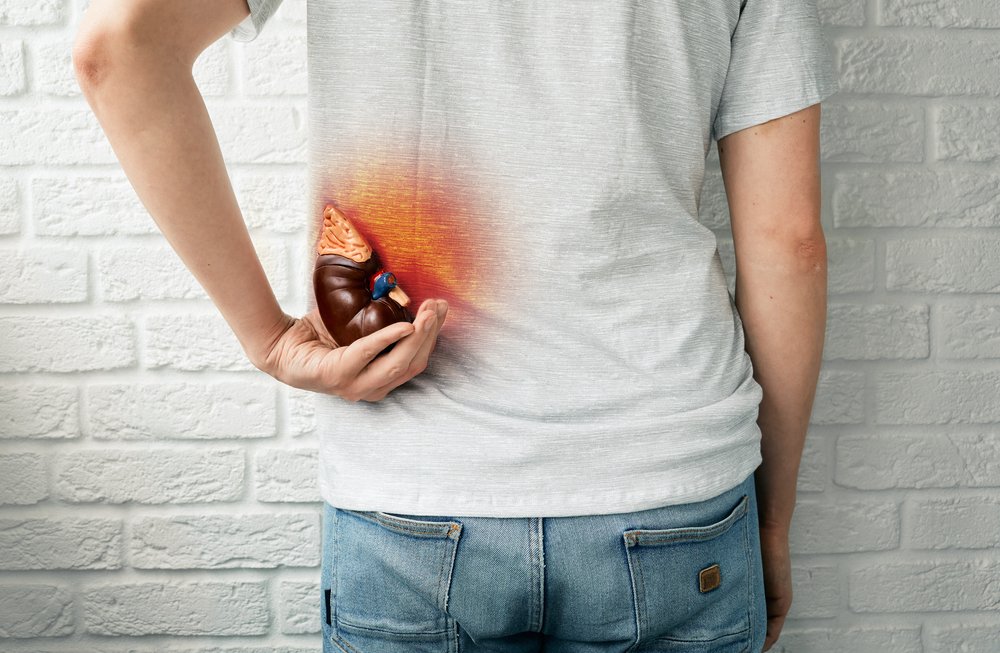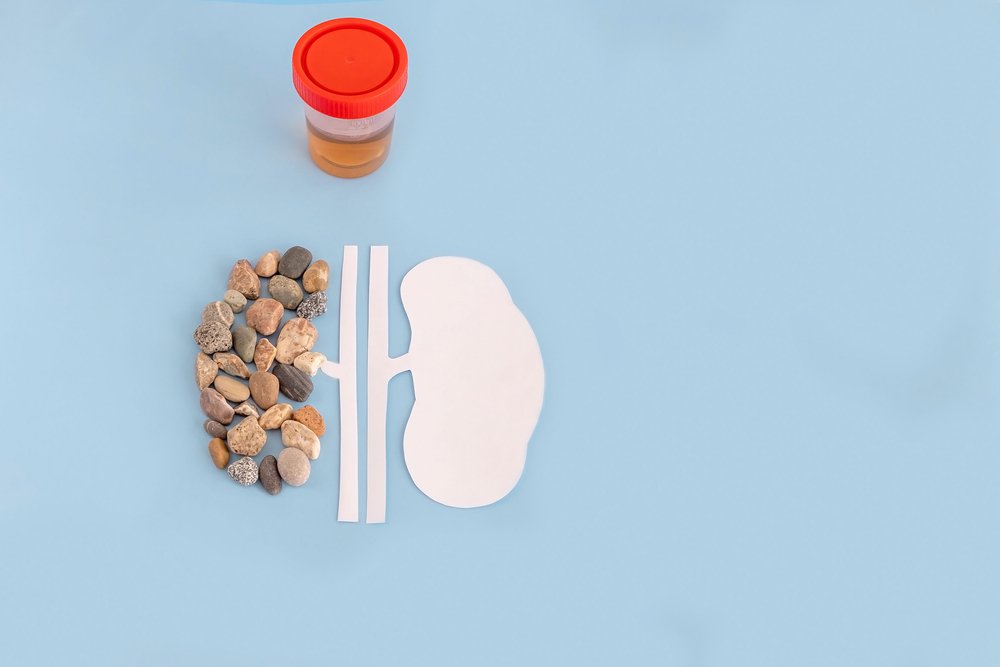Kidney stones are unpleasant and dangerous. They cause severe pain and can provoke inflammatory processes and other complications.
There are many approaches to the treatment of urolithiasis, both conservative and surgical. Read about modern treatment methods in this The First Doc. article.
Medication treatment.
Kidney stones can be removed without surgery – but only if the size and location of the stones allow the hope that they will recede on their own. The clinical guidelines for the diagnosis and treatment of urolithiasis state that drug therapy is justified when the stone is less than 5 mm in size.
Various medications are used to make it easier to remove the concrements:
- Diuretics. Increase the formation and excretion of urine, which flushes stones out of the urinary tract.
- Antispasmodics and analgesics. Relieve pain, relax the smooth muscles of the urinary tract and promote stone excretion.
- Chemolytic agents. Literally dissolve the stone – partially or completely. Such medications are not effective against all stones, but only against urates consisting of uric acid. Against other stones – oxalates and phosphates – such tactics are ineffective.
- Metabolic agents. Restore the disturbed metabolism and prevent stone recurrence.
In addition to the above remedies, antibacterial drugs are often prescribed. They do not act directly on the stones, but prevent the development of secondary infection – a frequent complication of urolithiasis.
Urolithiasis is one of the most common urological diseases. Urolithiasis treatment methods are constantly being improved. Unfortunately, until now, there are no non-surgical techniques that guarantee a 100% recovery from stones in the urinary system.
Surgical methods are prioritized by those with low traumatic effect, high efficiency (getting rid of the stone in one procedure, without additional crushing it repeatedly), with a short post-operative recovery period. Contact lithotripsy meets these requirements the most.
The limitations of this technique described in the article (difficulties in crushing concrements in the upper third of the ureter and kidney) are currently of a technical nature: if the clinic is well equipped (with a flexible uretero-renoscope), the patient can get rid of concrements in this section of the urinary tract as well.
Surgical treatment

Drug therapy is usually carried out for 3-4 weeks, after which a follow-up examination – ultrasound or computed tomography – is done. If there is no effect and the stone remains in the kidneys, surgical treatment is suggested.
Back at the end of the last century, to get a kidney or urinary tract stone out, you had to have open surgery. It was difficult, time-consuming and unsafe. Significant damage to the skin and soft tissues, a high risk of bleeding and infections, a long recovery time – all this forced doctors to look for other ways to solve the problem. Eventually, minimally invasive surgical options were suggested. Today, open surgeries are practically non-existent – they have been replaced by other methods:
- Contact ureterolithotripsy;
- Percutaneous nephrolitholapaxy.
Contact ureterolithotripsy
Ureterolithotripsy is a minimally invasive stone crushing procedure. The surgeon does not make incisions in the skin. He inserts a special instrument through the urethra, advances to where the stone is located, and breaks it up. The stone can be crushed in different ways, but most often a laser or ultrasound is used, sometimes with compressed air. After that, the doctor inserts a stent into the urethra – to facilitate the excretion of urine and stone remains.
Stone removal surgery is always performed under general or spinal anesthesia. This practice is considered to be quite effective – for example, using a laser it is possible to get rid of several concrements at once in one session. The patient recovers quickly, because the operation is performed without tissue damage.
This method also has limitations. Contact lithotripsy is good for stones located in the middle and lower thirds of the ureter, and worse for stones located above it. The development of complications is not excluded – first of all, bleeding, infection of tissues and ureteral stricture formation.
Percutaneous nephrolitholapaxis

This operation is performed through a small incision in the lumbar region. The doctor cuts the tissue, creates a hole in it, and then inserts a special instrument, a nephroscope. He brings the endoscope to the stone and destroys it with laser or ultrasound.
The operation resembles contact ureterolithotripsy, and the only difference is that all manipulations are not performed through the urethra, but through an incision of the skin and soft tissues on the lower back.
The percutaneous operation is usually performed for large stones from 2 cm. It requires general or spinal anesthesia. It is a minimally invasive procedure, so the tissues heal quickly, and the patient can go about his usual activities and return to work or school the very next day.
Percutaneous nephrolitholapaxis has the same limitations as ureterolithotripsy. It is most effective for stones in the lower and middle part of the ureter and sometimes leads to the development of complications – bleeding, infection, etc.
Noncontact surgery
According to the European Association of Urologists, non-contact lithotripsy is one of the most modern, effective, and safe methods of treating urinary tract stones.
Remote lithotripsy has such advantages:
- It is non-invasive – no need to make incisions or insert an instrument into the urethra.
- Does not require the use of anesthesia.
- Conducted on an outpatient basis, the patient can return to his or her normal lifestyle immediately after surgery.
For non-contact lithotripsy, various generators are used, which produce shock waves that destroy stones in the kidney and urinary tract. With the help of special equipment – X-ray or ultrasound – the doctor focuses these waves where the stone is located – and does not affect healthy tissue. As a result of the shock wave, the stone disintegrates into small fragments and exits with the flow of urine on its own.
Remote lithotripsy is painless for the patient. With this procedure, stones of different sizes can be removed. Sometimes the doctor may place a stent in the ureter before crushing large stones – 2 cm or more – to prevent blockage.
Remote lithotripsy is used for a variety of stone localizations, but is best when the stones are located in the kidneys and upper ureter. The procedure takes about an hour. Stone fragments do not come off immediately – it takes up to three months.
Thus, modern medicine can offer many treatment options for urolithiasis. The choice of method will depend on the size and location of the stone, as well as many other factors that the treating physician will take into account.
The articles on this site are for information purposes only. The site administrators are not responsible for attempting to apply any recipe, advice or diet, nor do they guarantee that the information provided will help or harm you personally. Be cautious and always consult a doctor or nutritionist!
*All products recommended by thefirstdoc.com are selected by our editorial team. Some of our articles include affiliate links. If you buy something through one of these links, you help us earn a small commission from the seller and thus support the writing of useful and quality articles.





